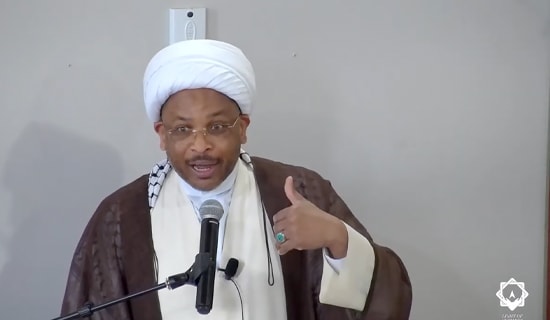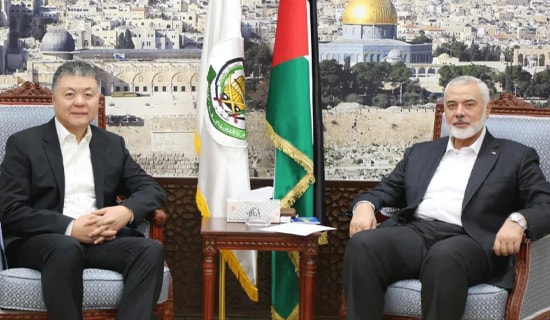Introduction
Since the Islamic Emirate of Afghanistan (the Taliban jihadi organization) took over Kabul in mid-August 2021, the senior Taliban leadership, seeking international recognition, has been trying to convince the West that it no longer supports any terrorist groups in Afghanistan. However, a report of the UN Monitoring Team submitted to the UN Security Council reveals that the Afghan Taliban continue to have an active collaboration with Al-Qaeda and remain in direct control of other foreign terrorist organizations.
The report – titled "Thirteenth report of the Analytical Support and Sanctions Monitoring Team Submitted Pursuant to Resolution 2611 (2021) Concerning the Taliban and Other Associated Individuals and Entities Constituting a Threat to The Peace Stability And Security of Afghanistan" – was published on May 26, 2022.[1]

According to the report, there is no longer a distinction between the finances of the Afghan state and the Afghan Taliban jihadi organization. "Now that they are running Afghanistan, Taliban finances overlap with State finances, albeit at a time of economic crisis," it says.
It adds: "[I]t is not possible to view Taliban finances separately from government revenue: they are intertwined and essentially the same. Although some officials from the former government remain in Da Afghanistan Bank and the ministry of finance, the Taliban have made strategic appointments of loyalists to key ministries, giving them access to information regarding government finances. They are said to want to know and control the source of revenues and how much is entering and leaving the country. The Haqqani Network currently occupies some key positions in the Bank..."
The report lists a number of Taliban officials[2] who continue to face international travel ban but were still appointed to top positions in the Taliban government.
However, the report is an indictment of the Afghan Taliban for supporting and hosting foreign jihadi terror organizations. Jaish-e-Muhammad (JeM) and Lashkar-e-Taiba (LeT), two Pakistani jihadi organizations which went underground in recent years following the Western pressure on Pakistan, are living under the patronage of the Afghan Taliban in several terror training camps in Afghanistan. Similarly, the Afghan Taliban continue to protect and work together with Jamaat Ansarullah, a close ally of Al-Qaeda, and Al-Qaeda in the Indian Subcontinent (AQIS), another branch of Al-Qaeda. East Turkestan Islamic Movement (ETIM), an anti-China terror group comprising of Uyghur Muslims from Xinjiang (East Turkestan) province of China, is also sheltered by the Taliban who have maintained close ties with China in recent years.

Taliban flag
This analysis is focused mainly on the Afghan Taliban's relationship with Al-Qaeda, Al-Qaeda-affiliated jihadi groups, and other foreign terror organizations based in Afghanistan. It includes subjects that will cover the following topics: how Al-Qaeda, Al-Qaeda In the Indian Subcontinent (AQIS), and Jamaat Ansarullah are flourishing under the Afghan Taliban's direct protection; the Afghan Taliban's support for Pakistani jihadi organizations such as Tehreek-e-Taliban Pakistan (TTP), Jaish-e-Muhammad, Lashkar-e-Taiba; and Lashkar-e-Taiba (LeT) visited by Afghan Taliban delegation; as well as the Taliban's facilitation of the East Turkestan Islamic Movement (ETIM) and Islamic State's Khurasan Province (ISIS-K).
Flourishing Under The Afghan Taliban's Direct Protection – Al-Qaeda, Al-Qaeda In The Indian Subcontinent (AQIS), Jamaat Ansarullah
Al-Qaeda
It is noteworthy that since its creation in the Pakistani city of Peshawar in 1988, Al-Qaeda has always functioned under the Islamic Emirate, with all Al-Qaeda leaders such as the late Osama bin Laden and the current leader Ayman Al-Zawahiri as well as Al-Qaeda affiliates having offered bay'a ("oath of allegiance") to the Afghan Taliban leader. This effectively renders Al-Qaeda part of the Islamic Emirate.
It is not surprising that Al-Qaeda, which was founded in the Pakistani city of Peshawar in 1988, has continued to find shelter in Afghanistan. "Al-Qaeda has used the Taliban's takeover to attract new recruits and funding and inspire Al-Qaeda affiliates globally," the UN report said, noting: "The relationship between Al-Qaeda and the Taliban remains close and is underscored by the presence, both in Afghanistan and the region, of Al-Qaeda core leadership and affiliated groups, such as Al-Qaeda in the Indian Subcontinent (AQIS)."
Noting that Al-Qaeda leader Ayman Al-Zawahiri has released eight video messages, the latest one released on April 5, 2022, since the Afghan Taliban seized power on August 15, 2021, the report states that Al-Zawahiri could be somewhere in the Pakistan-Afghanistan border region, observing: "The core Al-Qaeda leadership under Ayman Muhammed Rabi Al-Zawahiri is reported to remain in Afghanistan: more specifically, the eastern region from Zabul Province north towards Kunar and along the border with Pakistan."
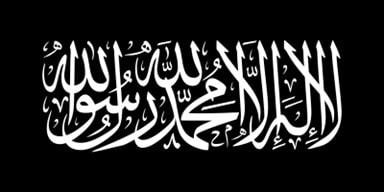
Al-Qaeda emblem
According to the report, the Egyptian terror mastermind Mohammed Salahaldin Abd El Halim Zidane aka Sayf Al-Adl could be "the likely successor" to Al-Zawahiri. "Sayf-Al Adl is assessed as a capable veteran commander who could take the group forward," it says, adding: "If he seeks to come to Afghanistan, the Taliban, knowing that such a move would be contentious with the international community, are expected to delay taking a decision on it until the last possible moment."
In the summer of 2021, the Afghan Taliban, "during their drive towards Kabul" freed from prison Abu Ikhlas Al-Masri, the former first emir for "Al-Qaeda in Afghanistan" who had overseen Al-Qaeda's Katiba Brigade in Kunar province in 2010 before his arrest and was replaced by Farooq Al-Qahtani. "Al-Masri's release may indicate a re-establishment of the former Al-Qaeda presence in Kunar with the assistance of another Al-Qaeda associate, Sheikh Abdul Hakim Al-Masri," the report notes. It says: "Al-Qaeda is reported to remain in the south and east of Afghanistan, where it had a historical presence... [But there was] a possible shift of core members to more westerly locations in Farah and Herat Provinces."
Al-Qaeda In The Indian Subcontinent (AQIS)
Al-Qaeda In the Indian Subcontinent (AQIS) forms a strong support base for Al-Qaeda in the Pakistan-Afghanistan region, with a major focus on Kashmir and the rest of India. According to the report, AQIS "is reported to have 180 to 400 fighters" among its ranks, including nationals from Bangladesh, India, Myanmar (Burma), and Pakistan, who are mainly based in the Ghazni, Helmand, Kandahar, Nimruz, Paktika, and Zabul Provinces of Afghanistan. Currently, AQIS is led by Osama Mahmood, with Atif Yahya Ghouri as his deputy and six operational commanders: Salahuddin (Bakwa), Azzam (alias Hussain), Qari Tufail (alias Fateh), and Ahsan Bilal Waqar (alias Akari).
"Being subordinate to Al-Qaeda core, AQIS is maintaining a low profile in Afghanistan, where the majority of its fighters are located. AQIS has not claimed an attack since 2016, but was involved in fighting alongside the Taliban, including during the rapid takeover of Afghanistan in 2021," the report notes.
SUPPORT OUR WORK

In late-August 2021, Amin Muhammad ul Haq Saam Khan, the former security coordinator for Osama bin Laden, returned to Nangarhar province in Afghanistan after the Taliban seized power and "proceeded to meet Gulbuddin Hekmatyar in Kabul," whereas "other Al-Qaeda members are reported to be living in Kabul's former diplomatic quarter, where they have access to Ministry for Foreign Affairs meetings..." Although Hekmatyar has his own group of fighters, he has been ideologically close to Al-Qaeda and the Afghan Taliban.
"While Al-Qaeda is reportedly aware of the need to avoid embarrassing the Taliban, it is noteworthy that when Taliban authorities were pressing to receive humanitarian support from the United Nations, Al-Qaeda did not soften its tone regarding the United Nations or its future intentions to mount attacks against Western targets," the report notes. It adds: "Comments aired by Al-Zawahiri in a video released through the group's official As-Sahab media branch in November 2021 described the United Nations as 'an enemy of Islam.' In February 2022, Al-Qaeda conveyed its close links to the Taliban in its magazine edition of 'Ummah Waahidah,' which advised the Taliban to become a regional military power and promised that Al-Qaeda would carry out attacks against the West. The latter threat was carefully worded to indicate that those attacks would emanate 'from the rest of the world' (that is, not from Afghanistan)."
The report warns: "Al-Qaeda appears free to pursue its objectives, short of international attacks or other high-profile activity that could embarrass the Taliban or harm their interests. These objectives are likely to include recruitment, training, fundraising and al-Zawahiri's video communications. It is assessed that Al-Qaeda is focused on reorganizing itself in the short-to-medium term with the ultimate objective of continuing its idea of global jihad."
Jamaat Ansarullah
Other than AQIS, another key jihadi organization that is under the Al-Qaeda umbrella and working in close partnership with the Islamic Emirate is Jamaat Ansarullah, whose approximately 300 fighters are mainly Tajik nationals and also include "some ethnic Tajiks from Afghanistan" – according to the report. The group is based in the Jurm, Registan, and Warduj districts of Badakhshan and Chapa Dara and Dasht-i-Archi districts of Kunduz. The report notes: "Jamaat Ansarullah (not listed) is closely associated with Al-Qaeda and, during 2021, fought alongside Taliban forces in Badakhshan [province]."
Jamaat Ansarullah is led by Sajod, the son of the former leader Damullo Amriddin, while Davlatov Asliddin (alias Ibrahim) acts as deputy, Kholbekov Shakarbek Alibekovich (alias Abu Jafar) as a military commander, Sajid Tajiki as an operational commander, and Haji Abdullo as the group financier.
The Afghan Taliban are also using Jamaat Ansarullah against other countries. "Amid worsening bilateral relations between Tajikistan and the Taliban in autumn 2021, Ansarullah fighters were deployed alongside Taliban red units along the Tajik border in Badakhshan, Kunduz, and Takhar Provinces," the report notes.
Afghan Taliban's Support To Pakistani Jihadi Organizations Such As Tehreek-e-Taliban Pakistan (TTP), Jaish-e-Muhammad (JeM), And Lashkar-e-Taiba (LeT)
Tehreek-e-Taliban Pakistan (TTP)
After the Islamic Emirate took power, it has sheltered and protected not only Al-Qaeda, but also a host of other jihadi organizations. Tehreek-e-Taliban Pakistan (the Movement of the Pakistani Taliban, TTP), which describes itself as a branch of the Afghan Taliban and offers bay'a to the Afghan Taliban leader just as Al-Qaeda does, has emerged as the major beneficiary of the Islamic Emirate taking control of Afghanistan.
The UN report notes that while the Afghan Taliban "have forced some foreign terrorist fighters to disarm or have relocated others away from the capital," such a move is aimed at ensuring that the foreign jihadi organizations "remain inconspicuous" and "Afghan citizenship is again being granted to foreign terrorist fighters," a citizenship policy adopted by the Islamic Emirate when it was first in power from 1996 to 2001.

A flag used by Tehreek-e-Taliban Pakistan (TTP)
The report adds: "Foreign terrorist fighters are viewed by the [Afghan] Taliban primarily as 'brothers in faith' and not mercenaries, as they do not receive significant financial benefit from the Taliban." The TTP constitutes "the largest component of foreign terrorist fighters" in Afghanistan, with other groups being the Eastern Turkistan Islamic Movement (ETIM), Islamic Movement of Uzbekistan (IMU), Jaish-e-Mohammed (JeM), Jamaat Ansarullah, and Lashkar-e-Taiba (LeT) – "each numbering in the few hundreds."
The TTP, led by its emir Mufti Noor Wali Mehsud, is supported by three deputy emirs Mawlawi Faqir Mohammad, Mufti Hazrat Deroji (alias Amjad), and Omar Khalid Khurasani (alias Abdul Wali Rakhib). According to the report, the main body of TTP also includes 17 former splinter groups that rejoined the main TTP body in 2020-2021, including Jamaat ul-Ahrar (JuA), led by Omar Khalid Khurasani.
"TTP has arguably benefitted the most of all the foreign extremist groups in Afghanistan from the Taliban takeover. It has conducted numerous attacks and operations in Pakistan. TTP also continues to exist as a stand-alone force, rather than feeling pressure to merge its fighters into Afghan Taliban units, as is the prospect for most foreign terrorist fighters. The group is estimated to consist of 3,000 to 4,000 armed fighters located along the east and south-east Afghanistan-Pakistan border areas," the report notes.
Jaish-e-Mohammed (JeM) Training Camps "Directly Under [Afghan] Taliban Control"
Jaish-e-Mohammed (JeM) is a Pakistani jihadi organization with long-standing links to the Islamic Emirate of Afghanistan. After Pakistan was placed on the grey list for terror financing by the Financial Action Task Force (FATF), a multi-lateral agency, JeM, Lashkar-e-Taiba (LeT) and other Pakistan-based jihadi organization went underground. JeM members also served in the Afghan Taliban government during the period of 1996-2001.
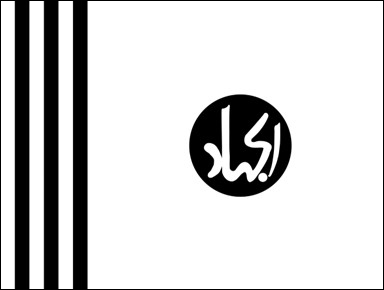
Jaish-e-Mohammed (JeM) emblem
Noting that JeM is "ideologically closer to the Taliban" now, the UN report notes that JeM runs "eight training camps in Nangarhar" province of Afghanistan and three of these camps "are directly under Taliban control."
JeM is led by Maulana Masood Azhar, one of three terror commanders freed by India in exchange for the passengers of an Indian Airlines plane hijacked to Kandahar in Afghanistan in 1999 when the Afghan Taliban were ruling the country. The UN report also identifies Qari Ramazan as "the newly appointed head of JeM in Afghanistan."
Afghan Taliban Delegation Visits Lashkar-e-Taiba (LeT)
Transnational jihadi organization Lashkar-e-Taiba (LeT) remains overground in Jammu & Kashmir where it is fighting, along with JeM and Hizbul Mujahideen, against the Indian armed forces. The only gunman captured following the November 2008 Mumbai attacks in which 175 people were killed over four days named Yusuf Muzzamil, an LeT leader, as one of the attack's masterminds.[3] After Pakistan was put on FATF's grey list and before it came under international pressure following 9/11, LeT first tried to survive under different names such as Jamaatud Dawa and Falah-i-Insaniat Foundation (FIF) but has now gone underground, as Pakistan seeks to get itself removed from the FATF grey list.
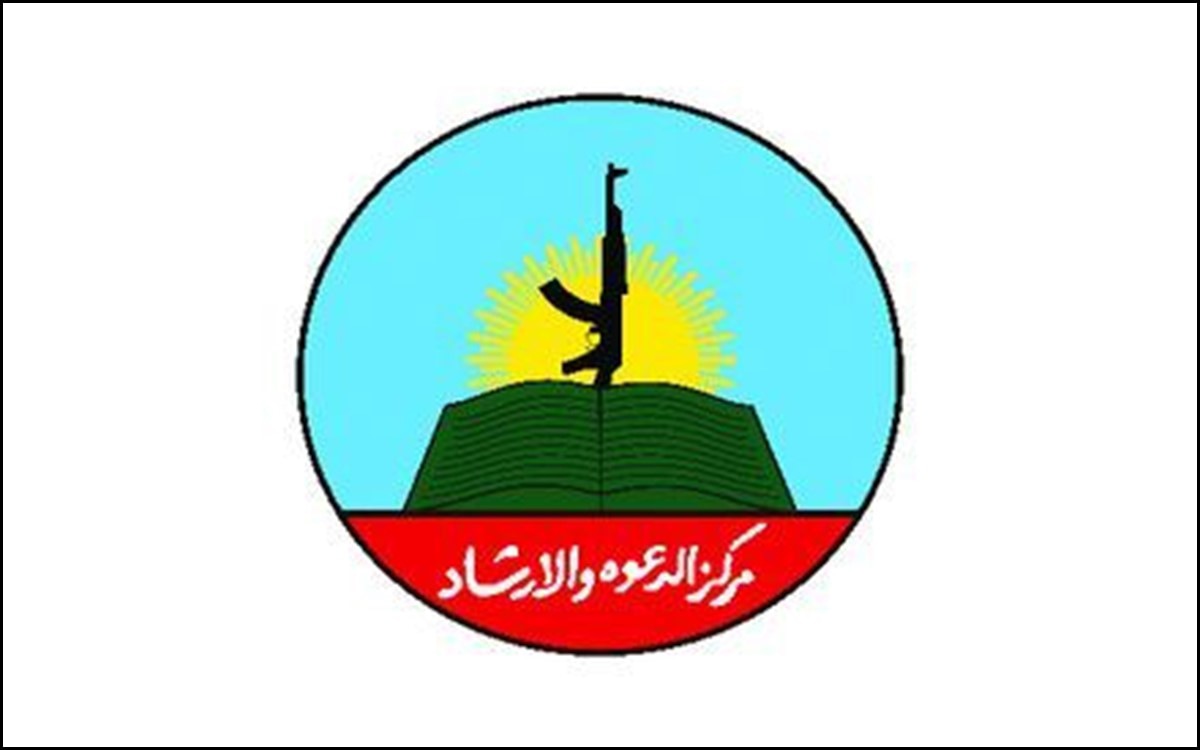
Lashkar-e-Taiba emblem
The UN report notes that LeT had previously "provided finance and training expertise to [Afghan] Taliban operations [against U.S. and NATRO troops in Afghanistan]." According to the report, in October 2021 – two months after the Afghan Taliban seized power in Kabul – LeT leader Mawlawi Assadullah "met with Taliban Deputy Interior Minister Noor Jalil," who works under the Interior Minister Sirajuddin Haqqani, FBI's Most Wanted and chief of Haqqani Network, the deadly unit within the Afghan Taliban known for a major terror attack on U.S. embassy in Kabul.
Although JeM is led by Maulana Masood Azhar, "within Afghanistan... it is led by Mawlawi Yousuf." The report also observes: "[I]n January 2022, a Taliban delegation visited a training camp used by LeT in the Haska Mena district of Nangarhar. The group was said to maintain three camps in Kunar and Nangarhar." Some of LeT's key commanders, including Aslam Farooqi and Ejaz Ahmad Ahangar aka Abu Usman al-Kashmiri, joined the Islamic State's Khurasan (ISIS-K) branch, according to the report.
East Turkestan Islamic Movement (ETIM) Facilitated By Afghan Taliban
To gain legitimacy, the Islamic Emirate has developed close relationships with China (as well as Russia and Iran) in recent years. Afghan Taliban leaders visited Beijing several times to hold talks with the Chinese leadership in the years before they seized power in Kabul in August 2021. However, one of the jihadi organizations surviving under the Afghan Taliban's protection is the East Turkestan Islamic Movement (ETIM), which comprises anti-Chinese Uyghur jihadis from Xinjiang province.
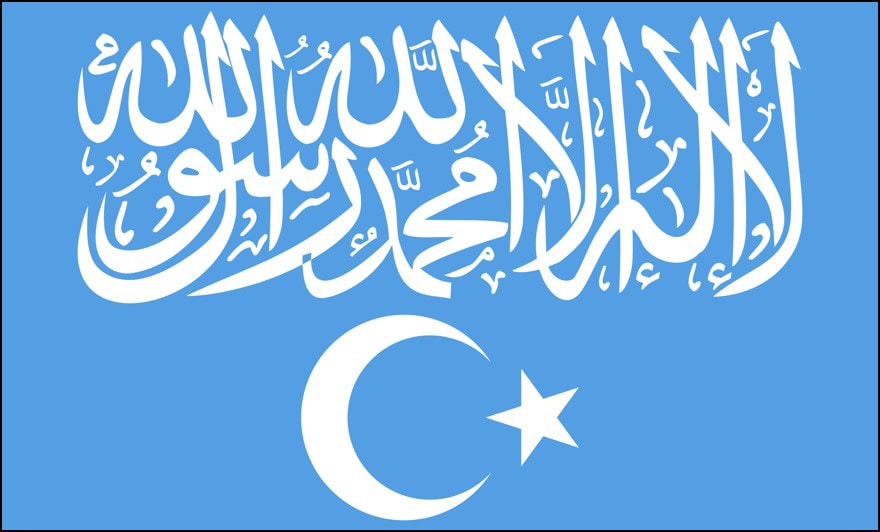
Turkestan Islamic Party (TIP) emblem
After the Afghan Taliban took over Kabul, the UN report says that "some members of ETIM were relocated from Badakhshan to provinces further from the Chinese border as part of the Talibanis efforts both to protect and restrain the group." The move was part of the Afghan Taliban's attempts to dispel Chinese concerns. However, ETIM – also sometimes known as Turkestan Islamic Party (TIP) due to the movement of leaders between the two organizations – remains active under the Taliban's patronage.
The report observes: "ETIM/TIP remains active and operating in Afghanistan... ETIM/TIP has expanded its operational space in Afghanistan, cultivating relations with local commanders to operate locally." When the Taliban were in power from 1996 to 2001, such Uyghur jihadis were given Afghan passports and many married into Afghanistan-Pakistani tribes over past several decades.
"The group [ETIM/TIP] is seeking to further entrench its presence in the country by both organizing marriages to local women and facilitating the relocation of Uyghur women to Afghanistan. They are also reported to operate schools that promote extremism. The group reportedly continues to disseminate propaganda online promoting violent extremism and to train fighters for the goal of establishing an 'East Turkestan state' through 'armed jihad' [in Xinjiang province, known also as East Turkestan]," the report continues.
The report points out that some Uyghur jihadis might have also joined Islamic State's Khurasan branch (ISIS-K), which claimed the October 2021 attack on a mosque in Kunduz province and revealed that the attacker was an ethnic Uyghur jihadi. "This suggests that some Uyghurs have joined [ISIS-K]..." Approximately 40 to 50 Uyghur jihadis based in Nuristan province are part of ISIS-K.
According to the UN report, "[ETIM/TIP] also collaborates with TTP [Tehreek-e-Taliban Pakistan]."
Islamic State's Khurasan Province (ISIS-K)
Since August 2021, when the Taliban took control of Afghanistan, the Islamic State's Khurasan Province (ISIS-K) has increased its attacks in Afghanistan and the border region of Pakistan. The ISIS-K is led by Sanaullah Ghafari aka Shahab al-Muhajir. The report also notes that "there have been reports of Tajik and Uzbek defections in the north" of Afghanistan, meaning Afghan Taliban commanders of these ethnicities have joined ISIS-K.
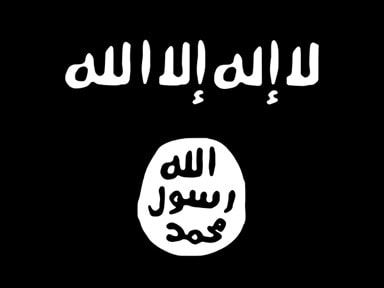
Islamic State flag
Putting the strength of ISIS-K somewhere "between 1,500 and 4,000 fighters" who are "concentrated in remote areas of Kunar, Nangarhar, and possibly Nuristan Province," the report notes that a large number of jihadis – "between 500 and 1,000" – freed from prisons in Afghanistan joined the ISIS-K. It adds that: "Smaller covert cells are thought to be present in the northern provinces of Badakhshan, Faryab, Jowzjan, Kunduz and Takhar."
The report observes: "Despite the clear strategic rivalry between the Taliban and ISIL-K, Member States cautioned that there might be local-level, pragmatic, transactional dealings between members of the two groups. The Taliban might not expend effort preventing attacks that do not target them, particularly if they advance Taliban interests. Attacks on Shia Hazara do not offend the Taliban and may be exploited by them as proof they are needed for counter-terrorism and that they, in turn, need international assistance for this."
* Yigal Carmon is President of MEMRI; Tufail Ahmad is Senior Fellow for the MEMRI Islamism and Counter-Radicalization Initiative.
[1] UN.org, May 26, 2022; Ecoi.net/en/file/local/2073803/N2233377.pdf, May 26, 2022.
[2] The notable names among the 26 officials who are not exempted from the UN's travel ban include: Khalifa Sirajuddin Haqqani aka Sirajuddin Jallaloudine Haqqani, minister of interior (the chief of Haqqani Network who is also on the list of FBI's most wanted);Mullah Hedayatullah Badri aka Gul Agha Ishakzai, minister of finance; Mullah Hamidullah Akhundzada aka Hamidullah Akhund Sher Mohammad, minister of civil aviation and transport; Hajji Khalilurahman Haqqani aka Khalil Ahmed Haqqani, minister of refugees; Mawlawi Abdul Rahman Zahed, commercial director of Da Afghanistan Brezhna Shirkat (National Electricity Company); Mawlawi Hamdullah Nomani, minister of urban development and lands; Mawlawi Abdul Qaher Idris aka Noor Ahmad Agha aka Hajji Ahmad Zia Agha, first deputy governor of Da Afghan Bank; and Mawlawi Abdul Qadir Ahmad aka Mawlawi Abdul Qadir Haqqani, listed as Abdul Qadeer Basir Abdul Baseer aka "Abdul Qadir Haqqani," deputy governor of Da Afghan Bank.
[3] Nytimes.com/2008/12/03/world/asia/03mumbai.html?bl&ex=1228453200&en=a32b625bf9928825&ei=5087%0A, December 2, 2008.


